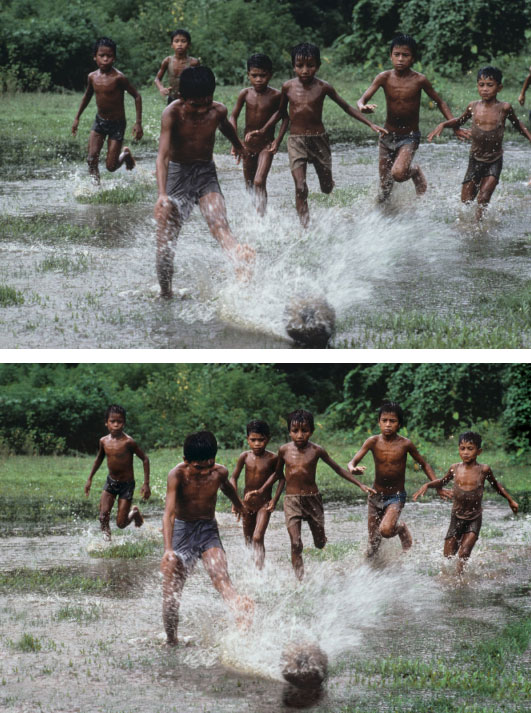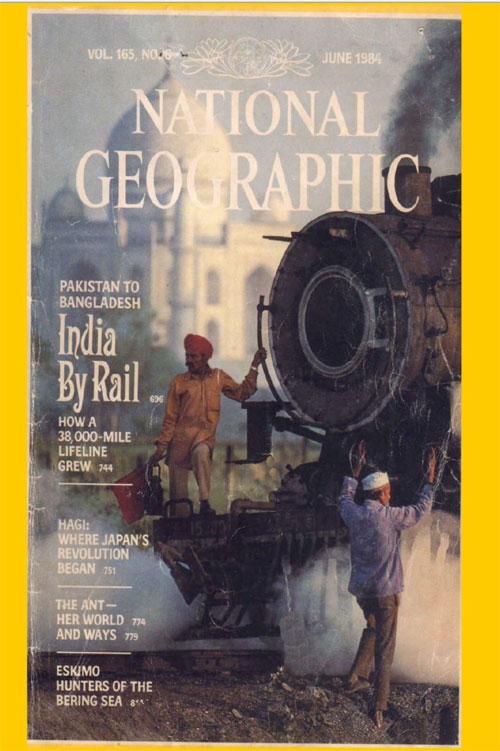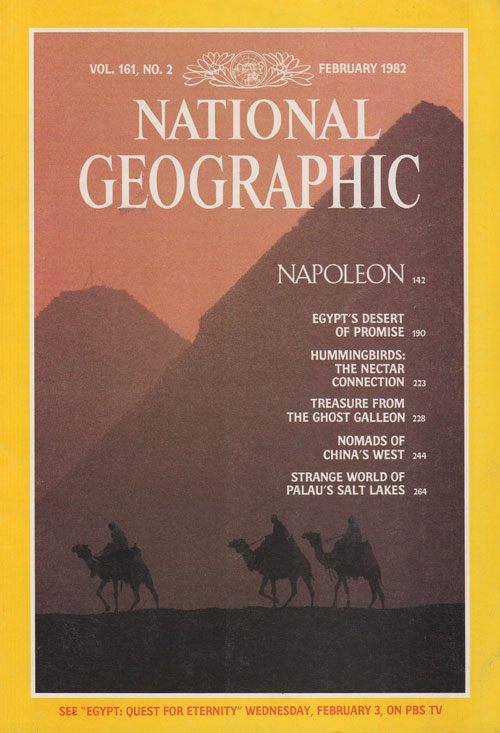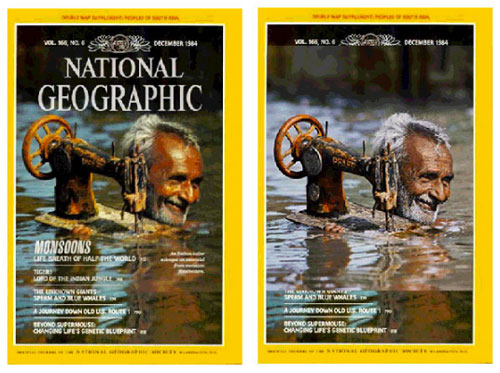Steve McCurry is an inspiring figure to many, and in the light of recent events a close examination of his photographs and his practice has been done. I only want to take it a few steps further, writes photographer and journalist Kshitij Nagar…
McCurry has come to photograph India on numerous occasions. It has a special place in his work and in his life. He has expressed his love for India many times over the years. Some regard India as his ‘Karma Bhoomi’ (the land where one works). It is a place that has provided him with countless iconic images and it is the place where he returned to, to shoot about half of the last roll of Kodachrome.
His depiction of this place has also has attracted him the most criticism, both in India and internationally. He is often accused of depicting a certain stereotypical, exotic, almost ‘slumdog millionaire-ish’ version of India that panders to western audiences.
This is a criticism that Teju Cole of the New York Times also levied on McCurry’s recent volume of photographs titled ‘India’ which is a compendium of all the images he made here between 1978 and 2014. He was faced the same criticism on stage at the launch of the same book in New Delhi. Further, in the review of his book, Cole goes on to remark ‘The pictures are staged or shot to look as if they were’. Again, McCurry was faced by these same questions at that launch event in January, which he chose to ignore.
Five months on a number of things have come to light regarding his work, with many questioning McCurry’s ethics, while others label it a ‘targeted witch hunt’. But there are a few details that some Indian photographers and fixers have always known that others have not.

A photo of children playing football in Bangladesh from a series of personal pictures, however a version found its way onto Magnum Photos’ website, but has since been removed.
After the initial articles were published, Indian photographer Satish Sharma made the following comments on his blog regarding the above image.
‘I am not at all surprised at the digital manipulation (done by him) to create the perfect frame. I have watched him rig (stage) his pictures. (He) Arranged the subjects (back then) because chromes (slide film) could not be that easily manipulated.’
Sharma goes onto cite an important and iconic image, that of the railway engine in front of the Taj Mahal.
 ‘This famous cover picture of his National Geographic story on the Railways was a special case that I remember. He actually had to re-shoot it and got the railways to take the engine back again, because the first shoot was not sharp enough.’
‘This famous cover picture of his National Geographic story on the Railways was a special case that I remember. He actually had to re-shoot it and got the railways to take the engine back again, because the first shoot was not sharp enough.’
Further elaborating Sharma says:
‘For a shot of the kitchen in “The Great Indian Rover” he actually had the railing around the work bench removed. I know because I was there. The last time I saw him he was arranging a picture in Delhi’s Lodi Garden directing a waiter where to stand.’
Perhaps, most perturbing of Sharma’s claims is the following image (below) which also appeared in the same National Geographic issue of 1984 on travelling across India by rail.
Regarding this Sharma writes: ‘This apparently off the cuff moment was arranged too. The lady is the wife of a photographer friend and the suitcases the coolie (porter) is carrying are empty. They had to be because the shot took time and lots of patient posing. McCurry’s pictures have been called STAGED CANDID MOMENTS by Avinash Pasricha, a photographer friend who knows how he works because he helped him with the pictures like the one above. The lady is his sister in law.’
In a bid to investigate and ratify Sharma’s claims, I made a call to Pasricha, veteran photographer living in Delhi. He had the following to say:
‘Yes, from what I can recall, Steve used to stage quite a few shots back then. He needed help whenever he came to India and people obliged. Since my house was and still is centrally located in the city he would come here often. He was always passionate and longing to go out and shoot again. On one occasion that he had come, he told me of a particular shot that he wanted to take on how people travel in India. He requested my sister in law Vanita to accompany him to New Delhi Railway station.’
On asking him about the suitcases on the porter’s head, he confirms that they are indeed empty.
A little bit of searching led me to the lady in the above said image, Vanita Pasricha, who briefly told me the following regarding the image:
‘This image is from about 32 years ago. He was a very polite man, a thorough gentleman who wanted a picture on how people travel in India. I went with him to New Delhi Railway Station in the morning for a few quick pictures. Those suitcases are my suitcases and that is my son Mithil that I am holding, who is in fact 38 years old now. I only met him a couple of times, I did not even know whether the photo was published or not. It is only when my brother called from the states did I get to know that it was published in National Geographic.’
The image was published in the June issue of 1984 of National Geographic as it appears.
While the claims of these people are compelling, damning and perturbing, what has been equally perturbing is McCurry’s handling of this matter, and the defence that he put forward in an exclusive interview with TIME.
In a press conference held at an exhibition of his work in Canada on May 27, he said the he was not in favour of ‘Photoshopping’ or ‘adding and subtracting elements from a picture’ and that the software should only be used as means of colour balance and correction.
Three days later in the interview with TIME he said that he will ‘rein in his use of Photoshop’ when asked about the controversy, while not directly making a reference to the fact that he has done so in the past or what exactly led to the glaring differences in between the different versions of the published images.
The removal of his entire blog and subsequent silence for a number of days raises further questions.
One must argue that by merely categorising himself now as a visual storyteller does not absolve McCurry of the ethics of simple photographic practice, depicting things the way they are, something he claims to always strive to according to this Ted talk from just a few years ago.
Moreover, this is especially important as his work has been continually published in publications such as National Geographic, which are bound by a strict code of journalistic ethics. While the days of photographing conflict may well be over, and he explores new ways of telling stories, his new and recent work continues to pop up in journalistic publications leading to a simple yet perturbing logical anomaly.
To add to that anomaly, his own website continues to reference him as a ‘photojournalist’, even though he is out exploring new ways of ‘visual storytelling’.
Further still, as a photojournalist myself, I must also argue that while McCurry has the freedom to explore new ways of storytelling and the freedom to alter images from personal projects, just like any other photographer, surely the publication of these images require a clarification detailing the extent of alteration – considering the viewer will in most cases connect it to McCurry’s photojournalistic aesthetic. Especially when the subject matter of these images is so similar to McCurry’s photojournalistic work.
McCurry cites a previous iconic cover image to TIME of a monsoon in India from a 1984 National Geographic, which was to an extent altered. The original image was horizontal and could not be published in the magazine’s vertical format. National Geographic decided to extend the water to fit the format.
A critical piece of information not shared in the interview is that the image was published with a disclaimer detailing the alteration according to a copy of the issue I obtained.
The reason that National Geographic was legally bound to issue that disclaimer is that just two years prior to that, in February 1982, National Geographic was in the middle of a serious controversy where they used an image altering software called ‘Scitex’ to fit a horizontal image of the Egyptian pyramids onto their vertical cover.
This resulted in a squeezed and altered view, different from the original photograph. The action led to widespread criticism. National Geographic finally submitted and decided to change it’s policy whereby it declared any digital alterations of that nature.

The editor of National Geographic wrote at that time:
‘At the beginning of our access to Scitex, I think we were seduced by the dictum, “If it can be done, it must be done”. But there’s a danger there. When a photograph becomes synthesis, fantasy, rather than reportage, then the whole purpose of the photograph dies. A photographer is a reporter — a photon thief, if you will. He goes and takes, with a delicate instrument, an extremely thin slice of life. When we changed that slice of life, no matter in what small way, we diluted our credibility.’
What truly needs to be examined is the state of McCurry’s legacy, especially for those that he has inspired over the years, particularly in India where he has had a lasting and inspiring footprint. The apparent staging and subsequent publishing in National Geographic raises further questions for him and National Geographic to answer.
In a casual conversation with my father on the issue, he said ‘I am very pained by this. This is almost unbelievable. I remember going out during the monsoon seasons with my Asahi Pentax in hand, just to see if I could get a picture like McCurry’s. It really pains to even think about this.’
Later, on pondering over McCurry’s most iconic image, Afghan Girl, he also found another, small discrepancy. The dirt, muck and glare from her right eye seems to have disappeared. Below on the left is the original image published by National Geographic and on the right a screen grab from a poster that McCurry is currently selling on his website.
 Ignoring the obvious difference in the colour of the two images due to different scanning and printing, the difference in the eyes is a bit difficult to miss when kept side by side. The flesh around the eye orbit is flatter and cleaner as compared to a more natural inwards concave shape. The dirt and muck, a vital element to the picture and a character trait of this girl, is missing too.
Ignoring the obvious difference in the colour of the two images due to different scanning and printing, the difference in the eyes is a bit difficult to miss when kept side by side. The flesh around the eye orbit is flatter and cleaner as compared to a more natural inwards concave shape. The dirt and muck, a vital element to the picture and a character trait of this girl, is missing too.
Interestingly though, the glare and muck is back in the version printed by National Geographic in the 100 Best Pictures commemorative issue.
 The variance in between different versions of published images seems to extend to McCurry’s most iconic image too, just like his other work.
The variance in between different versions of published images seems to extend to McCurry’s most iconic image too, just like his other work.
In a polite exchange with his studio over email, seeking a statement from him, I was informed that McCurry is presently travelling and is difficult to reach, we will publish a follow up with his responses on these questions as soon as he becomes available.
Editor’s note: We’ve previously reported just about all the McCurry Photoshop scandal is worth, however this article is the first instance where multiple sources have confirmed a number of his photos – published as photojournalism – were staged. Staging photo can cost a photographer their job and awards. An interesting narrative is added to the ethics debate when it appears one of the most celebrated photographers (published by one of the most celebrated magazines) has participated in manipulation in varying degrees during their career.
Kshitij Nagar is an independent photographer, videographer, and journalist based in New Delhi, India. He’s the Editor in Chief of the photography blog Writing Through Light. This article originally appeared here. You can follow him on Twitter and Instagram as @kshitijnagar.





A good discussion. Honesty in journalism should be a part of every news cycle. If we keep talking about it, it is harder to ignore, and truth will become the gold standard, not just pretty pictures. That being said, Steve’s work is excellent, and I would not think any less of it if it was explained at the time.
I expect competition drags many towards ‘perfecting’ images. So much content is being made standing out is hard, everything has to be so sharp, every shadow must have rich detail, every highlight controlled, skin must be either perfect or grizzly, colours must pop… The world has got a taste for rich sugary salty food, and a similar taste for over manufactured images.
I have to say, having done photojournalist (never posing) assignments, newspaper illustrative shoots (posing) and commercial shoots… I’ve never read NG and thought I was looking at unposed photos, whether or not they explicitly stated it. So many of their photos are clearly staged illustrations, that I assumed they all were/are, to a varying degree. Hearing McCurry pretending that he is a pure photojournalist is laughable and sad, since he is a great photographer, but of a different style to the one that he claims.